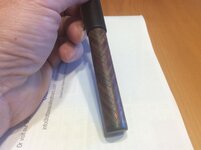its_virgil
Member
72 tiles to make 12 6-tile layers to get a blank to make this sierra. Of course, the number of tiles is a function of the tile thickness. Enjoy.
Do a good turn daily!
Don


Do a good turn daily!
Don


